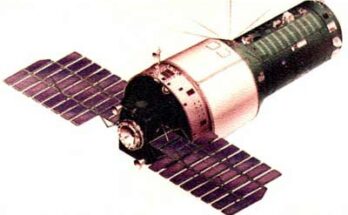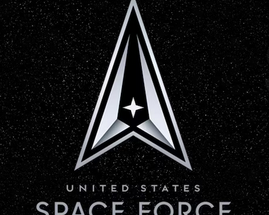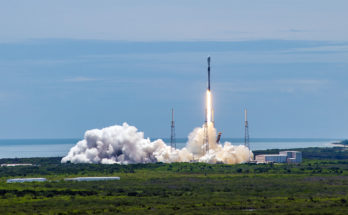by Bill Ostrove, Space Systems Analyst, Forecast International.
The U.S. Air Force has awarded two new contracts, worth a combined $161.9 million, as part of its effort to develop a replacement for the RD-180 rocket engine. Aerojet Rocketdyne was awarded $115.3 million to continue development of its oxygen/kerosene-fueled AR-1 booster engine, while United Launch Alliance (ULA) was awarded $46.6 million to continue work on the Blue Origin’s liquefied natural gas-fueled BE-4. ULA will also use funding to work on the Advanced Cryogenic Evolved Stage (ACES).[i]
The RD-180 that powers the ULA Atlas V Evolved Expendable Launch Vehicle (EELV) has become a source of controversy since the outbreak of conflict between Russia and Ukraine. Led by Sen. John McCain (R-Ariz.), Congress has ordered the Air Force to develop an alternative to the Russian-built RD-180 as soon as possible. McCain is currently attempting to ban use of the RD-180, which would force the USAF to rely on the Falcon 9 and Delta IV to carry its payloads to space. The Air Force favors the Atlas V, even though it uses Russian-built engines, because it is more powerful than the Falcon 9 and less expensive than the Delta IV.
In response to congressional demands, the Air Force and contractors have rushed to propose alternatives to the RD-180. ULA proposed developing an all-new launch vehicle, dubbed the Vulcan, to replace both the Atlas V and Delta IV. ULA says that the new launch vehicle would offer improved capability and lower prices, saving the Air Force money while improving ULA’s competitiveness in the commercial market. ULA wants to use the Blue Origin’s BE-4 engine for the Vulcan. However, it will keep Aerojet Rocketdyne’s AR-1 as a backup.
Some in Washington believe that the plan is too ambitious and would take too long to simply solve the problem of relying on Russian-built equipment. They say it would be cheaper and faster to develop an American-built rocket motor. For these people, the AR-1 is the favored solution, since it could be used in the current Atlas V, as well as newer launch vehicles, such as the proposed Vulcan.
The Air Force is stuck between these two opposing camps as it tries to forge a path to end reliance on the RD-180. The service wants to get the best price and also wants to maintain a competitive rocket industry. In addition, the USAF must please Congress, which ultimately controls the purse strings. Aerojet and ULA have already begun work on the new engines, forcing the Air Force to use alternative transaction agreements in lieu of standard procurement contracts in order to leverage ongoing investments. These agreements require a shared-cost model.
It appears that the service’s strategy is to fund multiple efforts to develop new rocket engine technology. Since the beginning of 2016, the USAF has signed four public-private contracts with four rocket companies that will enable technology to be developed using funds from both the government and private industry.
In January, the Air Force awarded SpaceX $33.7 million to work on the Raptor upper stage motor. It also awarded Orbital ATK $47 million to work on the GEM 63XL solid rocket motor, the Common Booster Segment (CBS) solid rocket motor, and an extendable nozzle for the Blue Origin’s BE-3U upper stage engine.[ii]
The contracts awarded on February 29 are larger and more ambitious. While the two contracts are worth an initial combined value of $161.9 million, they have options that could bring the total to over $750 million. The total potential government investment in the AR-1, including all options, is $536 million. If all government contracts are exercised, Aerojet will invest $268 million in the project. In ULA’s case, if all options are exercised, the government will invest a total of $201.7 million and ULA will invest $134.2 million to work on the BE-4 and ACES. All work for these contracts is expected to be completed by 2019.
Whichever engine is ultimately selected, the way the USAF acquires launch services is about to change. Throughout the course of the EELV program, there has been a close relationship between the Air Force and ULA. The Air Force provided funds to ULA to maintain launch infrastructure and signed a long-term non-competitive contract for launches. Going forward, the Air Force’s launch services will be much more commercial in nature. The Air Force will simply put out a Request for Proposals (RFP) to industry for launch services, and companies will compete for the business. The Air Force hopes this will improve prices.
[i] http://www.defense.gov/News/Contracts/Contract-View/Article/682238
[ii] http://www.forecastinternational.com/news/article.cfm?recno=237813
Forecast International offers two Space Systems Forecast products: Launch Vehicles & Manned Platforms, with reports on manned spacecraft, expendable launch vehicles and more, and Satellites & Spacecraft, with coverage ranging from microsatellites to large COMSATs – all complete with technical specifications and forecast details.
For 50 years, Forecast International intelligence reports have been the aerospace and defense industry standard for accurate research, analysis, and projections. Our experienced analysts compile, evaluate, and present accurate data for decision makers. FI's market research reports offer concise analysis of individual programs and identify market opportunities. Each report includes a program overview, detailed statistics, recent developments and a competitive analysis, culminating in production forecasts spanning 10 or 15 years. Let our market intelligence reports be a key part of reducing uncertainties and mastering your specific market and its growth potential. Find out more at www.forecastinternational.com




